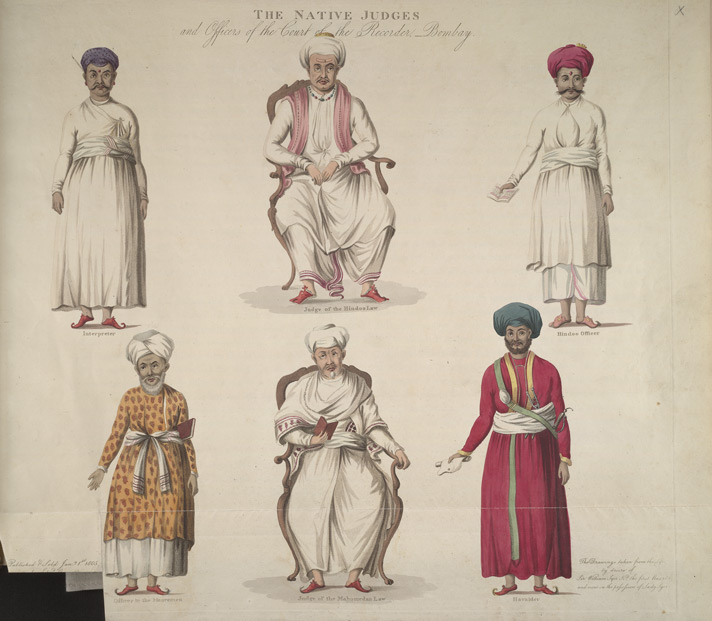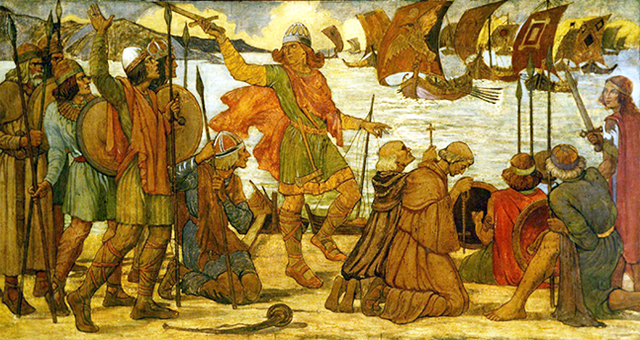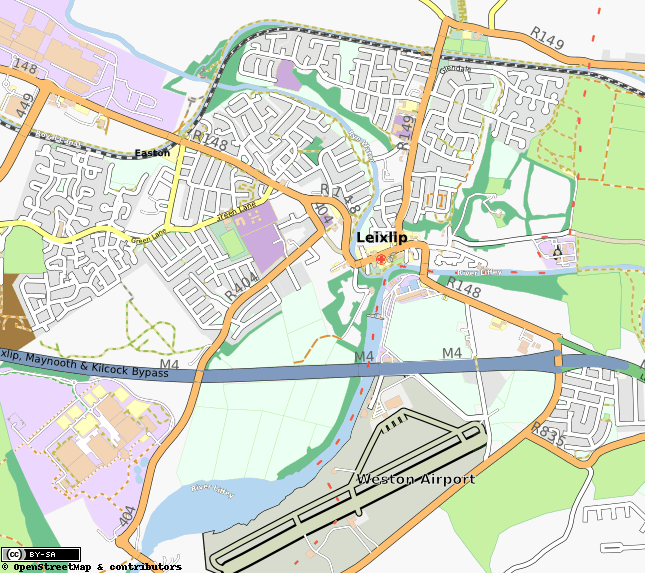|
John Gough (judge)
John Gough, or John Gogh (died after 1467) was an Irish barrister, judge and Crown official of the fifteenth century.Ball, F. Elrington ''The Judges in Ireland 1221–1921'' London John Murray 1926 p.179 He was probably a native of Waterford city (the name Gough, though of Welsh language, Welsh origin, is common in Waterford). There is a reference in the Patent Roll of 1428 to "John Gogh, justice", possibly the father or another close relative of this John Gogh.''Patent Roll 7 Henry VI'' Nicholas Gough, described as a merchant of Waterford in 1421, may also have been a relative. He acted as counsel to the city of Waterford in the early 1440s, in succession to Edward Somerton, who was appointed Serjeant-at-law (Ireland), King's Serjeant in 1437.Hart, A.R. ''A History of the King's Serjeants-at-law in Ireland'' Dublin Four Courts Press 2000 p.179 By 1442 Gough was being praised as a man who had given "good service" to the English Crown. In the same year, he was appointed second chamb ... [...More Info...] [...Related Items...] OR: [Wikipedia] [Google] [Baidu] |
Judge
A judge is a person who wiktionary:preside, presides over court proceedings, either alone or as a part of a judicial panel. In an adversarial system, the judge hears all the witnesses and any other Evidence (law), evidence presented by the barristers or solicitors of the case, assesses the credibility and arguments of the parties, and then issues a Court order, ruling in the Case law, case based on their Judicial interpretation, interpretation of the law and their own personal judgment. A judge is expected to conduct the trial impartially and, typically, in an in open court, open court. The powers, functions, method of appointment, discipline, and training of judges vary widely across different jurisdictions. In some jurisdictions, the judge's powers may be shared with a jury. In inquisitorial systems of criminal investigation, a judge might also be an examining magistrate. The presiding judge ensures that all court proceedings are lawful and orderly. Powers and functions The ult ... [...More Info...] [...Related Items...] OR: [Wikipedia] [Google] [Baidu] |
Privy Council Of Ireland
His or Her Majesty's Privy Council in Ireland, commonly called the Privy Council of Ireland, Irish Privy Council, or in earlier centuries the Irish Council, was the institution within the Dublin Castle administration which exercised formal executive power in conjunction with the chief governor of Ireland, who was viceroy of the British monarch. The council evolved in the Lordship of Ireland on the model of the Privy Council of England; as the English council advised the king in person, so the Irish council advised the viceroy, who in medieval times was a powerful Lord Deputy. In the Early Modern Ireland, early modern period the council gained more influence at the expense of the viceroy, but 18th-century Ireland, in the 18th century lost influence to the Parliament of Ireland. In the post-1800 United Kingdom of Great Britain and Ireland, the Irish Privy Council and viceroy Lord Lieutenant of Ireland, Lord Lieutenant had formal and ceremonial power, while policy formulation rested wi ... [...More Info...] [...Related Items...] OR: [Wikipedia] [Google] [Baidu] |
Parliament Of Ireland
The Parliament of Ireland () was the legislature of the Lordship of Ireland, and later the Kingdom of Ireland, from 1297 until the end of 1800. It was modelled on the Parliament of England and from 1537 comprised two chambers: the Irish House of Commons, House of Commons and the Irish House of Lords, House of Lords. The Lords were members of the Peerage of Ireland, Irish peerage ('Lords Temporal, lords temporal') and Bishop, bishops ('Lords Spiritual, lords spiritual'; after the Reformation, Church of Ireland bishops). The Commons was directly elected, albeit on a very restricted Suffrage, franchise. Parliaments met at various places in Leinster and Munster, but latterly always in Dublin: in Christ Church Cathedral, Dublin, Christ Church Cathedral (15th century),Richardson 1943 p.451 Dublin Castle (to 1649), Chichester House (1661–1727), the The King's Hospital, Blue Coat School (1729–31), and finally a purpose-built Parliament House, Dublin, Parliament House on College G ... [...More Info...] [...Related Items...] OR: [Wikipedia] [Google] [Baidu] |
Statute
A statute is a law or formal written enactment of a legislature. Statutes typically declare, command or prohibit something. Statutes are distinguished from court law and unwritten law (also known as common law) in that they are the expressed will of a legislative body, whether that be on the behalf of a country, state or province, county, municipality, or so on. Depending on the legal system, a statute may also be referred to as an "act." Etymology The word appears in use in English as early as the 14th century. "Statute" and earlier English spellings were derived from the Old French words ''statut'', ''estatut'', ''estatu,'' meaning "(royal) promulgation, (legal) statute." These terms were in turn derived from the Late Latin ''statutum,'' meaning "a law, decree." Publication and organization In virtually all countries, newly enacted statutes are published and distributed so that everyone can look up the statutory law. This can be done in the form of a government gazette, whi ... [...More Info...] [...Related Items...] OR: [Wikipedia] [Google] [Baidu] |
County Dublin
County Dublin ( or ) is a Counties of Ireland, county in Republic of Ireland, Ireland, and holds its capital city, Dublin. It is located on the island's east coast, within the Provinces of Ireland, province of Leinster. Until 1994, County Dublin (excluding the city) was a single Local government in the Republic of Ireland, local government area; in that year, the county council was divided into three new administrative counties: Dún Laoghaire–Rathdown, Fingal and South Dublin. The three administrative counties together with Dublin City proper form a NUTS III NUTS statistical regions of Ireland, statistical region of Ireland (coded IE061). County Dublin remains a single administrative unit for the purposes of the courts (including the Dublin County Sheriff, but excluding the bailiwick of the Dublin City Sheriff) and Dublin County combined with Dublin City forms the Judicial County of Dublin, including Dublin Circuit Court, the Dublin County Registrar and the Dublin Metropolitan ... [...More Info...] [...Related Items...] OR: [Wikipedia] [Google] [Baidu] |
Chapelizod
Chapelizod () is a suburban village of Dublin, Ireland. It lies in the wooded valley of the River Liffey, near the Strawberry Beds and the Phoenix Park. The village is associated with Iseult of Ireland and the location of Iseult's chapel. Chapelizod is under the administration of Dublin City Council. Location The civil parish of Chapelizod is part of the barony of Castleknock. The parish consists of a single townland of the same name. However, 465 acres are within the walls of the Phoenix Park while the village proper, outside the walls, contains only 67 acres. It is the only parish of the barony that lies outside the territory of the modern county of Fingal. Chapelizod forms part of the local electoral area of Ballyfermot–Drimnagh within the Dublin City Council administrative area. History The origins of Chapelizod are obscure. There is evidence of Neolithic settlement between the southern ridge of the Phoenix Park and the Liffey and several burial mounds exist to the ... [...More Info...] [...Related Items...] OR: [Wikipedia] [Google] [Baidu] |
Leixlip
Leixlip ( or ; , ) is a town in north-east County Kildare, Ireland. Its location on the confluence of the River Liffey and the Rye Water has marked it as a frontier town historically: on the border between the ancient kingdoms of Leinster and Brega, as an outpost of The Pale, and on Kildare's border with County Dublin. Leixlip was also a civil parish in the ancient barony of Salt North. As of 2022, the population of the town was 16,773. It is the fifth largest town in Kildare, and the 30th largest in Ireland. Name The placename comes from the Old Norse ''lax hlaup'' ( Younger Futhark: ᛚᛅᚼᛋ ᚼᛚᛅᚢᛒ; ) which means "salmon leap". The name in the Irish language (''Léim an Bhradáin'') is a direct translation of this, and was first adopted in the 1890s. In Latin, it is ''Saltus salmonis'', from which comes the names of the baronies of North Salt and South Salt. History Leixlip was a possible site of the Battle of Confey, in which the Viking King Sigtrygg ... [...More Info...] [...Related Items...] OR: [Wikipedia] [Google] [Baidu] |
Kilmainham
Kilmainham (, meaning " St Maighneann's church") is a south inner suburb of Dublin, Ireland, south of the River Liffey and west of the city centre. It is in the city's Dublin 8 postal district. History Origins Kilmainham's foundation dates to the early Christian period, with the monastery of Cell Maignenn (Cill Mhaighneann in modern Irish) established by the year 606. By 795, the ecclesiastical site, located on the ridge of land at the confluence of the Liffey and the Camac, may still have been the only substantial structure along the Liffey's banks. The Kilmainham Brooch, a late 8th- or early 9th-century Celtic brooch of the "penannular" type (i.e. its ring does not fully close or is incomplete) was unearthed in the area. In the wake of the Viking settlement of nearby Dublin from 841, Vikings were present in Kilmainham too, one of a number of villages that stretched up the river bank to Clondalkin. Viking cemeteries at the site of the monastery and at nearby Islandbri ... [...More Info...] [...Related Items...] OR: [Wikipedia] [Google] [Baidu] |
Knights Hospitallers
The Order of Knights of the Hospital of Saint John of Jerusalem, commonly known as the Knights Hospitaller (), is a Catholic military order. It was founded in the crusader Kingdom of Jerusalem in the 12th century and had headquarters there until 1291, thereafter being based in Kolossi Castle in Cyprus (1302–1310), the island of Rhodes (1310–1522), Malta (1530–1798), and Saint Petersburg (1799–1801). The Hospitallers arose in the early 12th century at the height of the Cluniac movement, a reformist movement within the Benedictine monastic order that sought to strengthen religious devotion and charity for the poor. Earlier in the 11th century, merchants from Amalfi founded a hospital in Jerusalem dedicated to John the Baptist where Benedictine monks cared for sick, poor, or injured Christian pilgrims to the Holy Land. Blessed Gerard, a lay brother of the Benedictine order, became its head when it was established. After the Christian conquest of Jerusalem in 1099 d ... [...More Info...] [...Related Items...] OR: [Wikipedia] [Google] [Baidu] |
Prior (ecclesiastical)
Prior (or prioress) is an Ecclesiology, ecclesiastical Title#Ecclesiastical titles (Christian), title for a Superior (hierarchy), superior in some religious orders. The word is derived from the Latin for "earlier" or "first". Its earlier generic usage referred to any monastic superior. In abbeys, a prior would be lower in rank than the abbey's abbot or abbess. Monastic superiors In the Rule of Saint Benedict, the term appears several times, referring to any superior, whether an abbot, Provost (religion), provost, Dean (Christianity), dean, etc. In other old monastic rules, the term is used in the same generic sense. With the Cluniac Reforms, the term ''prior'' received a specific meaning; it supplanted the provost or dean (''praepositus''), spoken of in the Rule of St. Benedict. The example of the Cluniac congregations was gradually followed by all Benedictine monasteries, as well as by the Camaldolese, Vallombrosians, Cistercians, Hirsau Abbey, Hirsau congregations, and other ... [...More Info...] [...Related Items...] OR: [Wikipedia] [Google] [Baidu] |
Salary
A salary is a form of periodic payment from an employer to an employee, which may be specified in an employment contract. It is contrasted with piece wages, where each job, hour or other unit is paid separately, rather than on a periodic basis. Salary can also be considered as the cost of hiring and keeping human resources for corporate operations, and is hence referred to as personnel expense or salary expense. In accounting, salaries are recorded in payroll accounts. A salary is a fixed amount of money or compensation paid to an employee by an employer in return for work performed. Salary is commonly paid in fixed intervals, for example, monthly payments of one-twelfth of the annual salary. Salaries are typically determined by comparing market pay-rates for people performing similar work in similar industries in the same region. Salary is also determined by leveling the pay rates and salary ranges established by an individual employer. Salary is also affected by the number of ... [...More Info...] [...Related Items...] OR: [Wikipedia] [Google] [Baidu] |
Lord Treasurer Of Ireland
The Lord High Treasurer of Ireland was the head of the Exchequer of Ireland, and chief financial officer of the Kingdom of Ireland. The designation ''High'' was added in 1695. After the Acts of Union 1800 created the United Kingdom of Great Britain and Ireland, the Consolidated Fund Act 1816 merged the Irish Inferior Exchequer into the British Treasury with effect from 1817. The act also mandated that the post of Lord High Treasurer of Ireland could only be held together with the post of Treasurer of the Exchequer, with the person holding both being Lord High Treasurer. If no person is appointed to the combined positions, then the Lord High Treasurer of Ireland is placed in commission and represented by the Lords Commissioners of the Treasury, as has been the case continuously since 1816. The Superior Irish Exchequer, or Court of Exchequer, remained, led by the Chief Baron of the Irish Exchequer. Lord Treasurers of Ireland 1217–1695 *1217–1232: John de St John, Bishop ... [...More Info...] [...Related Items...] OR: [Wikipedia] [Google] [Baidu] |





